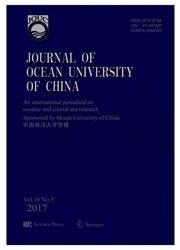

 中文摘要:
中文摘要:
Two sulfated polysaccharides, designated MP and SP, were extracted from the marine green alga Enteromorpha linza using hot water and then purified using ion-exchange and size-exclusion chromatography. The anticoagulant activities of MP and SP were examined by determination of their activated partial thromboplastin time (APTT), thrombin time (TT) and prothrombin time (PT) using human plasma. Results showed that MP and SP were composed of abundant rhamnose with small amounts of xylose and glucuronic acid, whereas SP also contained a small amount of galactose. Approximate molecular weights of MP and SP were 535 and 502 kDa, respectively. As compared with SP, MP had higher contents of sulfate ester (19.0%) and uronic acid (14.9%). The MP mainly consisted of (1→4)-linked rhamnose residues with partially sulfated groups at the C-3 position, and small amounts of (1→3, 4)-linked rhamnose, (1→2, 4)-linked rhamnose, (1→4)-linked glucuronic acid and (1→4)-linked xylose residues. The SP contained abundant (1→4)-linked rhamnose with minor amounts of (1→3)-linked rhamnose, (1→3, 4)-linked rhamnose, (1→2, 4)-linked rhamnose, (1→4)-linked glucuronic acid, (1→4)-linked xylose, and (1→3)-linked galactose residues. The sulfate groups were mainly located at C-3 of (1→4)-linked rhamnose residues. Both MP and SP, in particular the former, effectively prolonged APTT and TT. This work demonstrates that MP and SP have unique structural characteristics distinct from those of other sulfated polysaccharides from Enteromorpha. The MP is a potential source of anticoagulant, and the difference in anticoagulant activities of the two sulfated polysaccharides is directly linked to the discrepancy of their chemical features.
 英文摘要:
英文摘要:
Two sulfated polysaccharides, designated MP and SP, were extracted from the marine green alga Enteromorpha linza using hot water and then purified using ion-exchange and size-exclusion chromatography. The anticoagulant activities of MP and SP were examined by determination of their activated partial thromboplastin time (APTT), thrombin time (TT) and prothrombin time (PT) using human plasma. Results showed that MP and SP were composed of abundant rhamnose with small amounts of xylose and glucuronic acid, whereas SP also contained a small amount of galactose. Approximate molecular weights of MP and SP were 535 and 502 kDa, respectively. As compared with SP, MP had higher contents of sulfate ester (19.0%) and uronic acid (14.9%). The MP mainly consisted of (1→4)-linked rhamnose residues with partially sulfated groups at the C-3 position, and small amounts of (1→3, 4)-linked rhamnose, (1→2,4)-linked rhamnose, (1→4)-linked glucuronic acid and (1→4)-linked xylose residues. The SP contained abundant (1→4)-linked rhamnose with minor amounts of (1→3)-linked rhanmose, (1→3, 4)-linked rhamnose, (1→2, 4)-linked rhanmose, (1→4)4inked glucuronic acid, (1→4)-linked xylose, and (1→3)-linked galactose residues. The sulfate groups were mainly located at C-3 of (1→4)-linked rhamnose residues. Both MP and SP, in particular the former, effectively prolonged APTT and TT. This work demonstrates that MP and SP have unique structural characteristics distinct from those of other sulfated polysaccharides from Enteromorpha. The MP is a potential source of anticoagulant, and the difference in anticoagulant activities of the two sulfated polysaccharides is directly linked to the discrepancy of their chemical features.
 同期刊论文项目
同期刊论文项目
 同项目期刊论文
同项目期刊论文
 Structural characterization of an anticoagulant-active sulfated polysaccharide isolated from green a
Structural characterization of an anticoagulant-active sulfated polysaccharide isolated from green a Preparation, structure and anticoagulant activity of a low molecular weight fraction produced by mil
Preparation, structure and anticoagulant activity of a low molecular weight fraction produced by mil Chemical characteristics and anticoagulant activities of two sulfated polysaccharides from Enteromor
Chemical characteristics and anticoagulant activities of two sulfated polysaccharides from Enteromor 期刊信息
期刊信息
